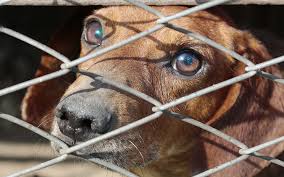Saving the Great Plains with prescribed fire, mixed grazing
The Prairie Project focuses on research, extension and education
by Adam Russell for AgriLife Today
Rangelands in the Great Plains, and the ranchers who depend on them, are losing battles against an invasion of brush and shrubs on historical grasslands.

Ranchers are under increasing stress due to changing environmental conditions and subsequent losses of rangelands to woody plants, but a relatively new management approach shows promise in turning the tide against encroaching brush and shrubs.
Texas A&M AgriLife Research scientist Brad Wilcox is among a group of researchers, extension specialists and educators who hope pyric herbivory will one day become a routine point of conversation in rangeland conservation and wildfire mitigation.
Pyric herbivory utilizes controlled patch burns to promote forage growth. Over thousands of years, fire and mixed animal grazing helped shape the Great Plains, which cover more than 452 million acres across 12 states.
Wilcox, Ph.D., AgriLife Research ecohydrologist in the Department of Ecology and Conservation Biology in the College of Agriculture and Life Sciences, Bryan-College Station, said the invasion by woody plants like cedar and mesquite presents a host of problems for producers, native ecosystems, and properties in both rural and urban areas.
Wilcox is leading a consortium of researchers, extension specialists and educators looking to help ranching operations and landowners prevent and reverse rangeland losses by replicating natural fire and grazing.
This undertaking, the Prairie Project, is a team effort that spans many institutions, agencies and disciplines. The project promotes pyric herbivory, mixed animal grazing and other disturbance regimens on rangelands in the Great Plains to make these areas more resilient to woody plant encroachment, wildfire and extreme heat events.
The Texas A&M University-led project is a collaboration with Oklahoma State University and the University of Nebraska and is funded via a five-year, $10 million U.S. Department of Agriculture National Institute of Food and Agriculture grant to test and promote pyric herbivory and other replicated natural disturbance regimens.
Protecting the Great Plains with fire, grazing
Native rangelands are the most endangered habitat in the U.S. and globally. Rangelands represent 30% of the land area in the U.S. and 40% of landscapes around the world, but many of these ecosystems are under pressure from encroaching, dense woodlands.

Woody shrubs lead to lost forage volume, which reduces producers’ operational capacity and sustainability, especially during increasingly volatile weather associated with climate change, Wilcox said. Woody shrubs also directly contribute to wildfire intensity and potential for loss of life and property.
Pyric herbivory utilizes controlled burns and a mix of grazing animals like goats and cattle to fill the roles naturally occurring fire and native grazers played in protecting prairie grasslands from encroaching woody plant species. This relatively new management approach is designed to help livestock producers reclaim rangelands lost to woody plants.
Wilcox said research has shown a wide range of benefits from using prescribed fire to minimize wildfire fuel and to create ecologic biodiversity that supports wildlife and agricultural operations. But adding the animal component with grazers and browsers and promoting ungulate species to keep woody plant species in check between burns is where pyric herbivory becomes a winning combination.
“We are trying to spark large-scale public change when it comes to utilization of this disturbance regime that these grasslands evolved under,” he said. “The science is clear about the benefits of using fire, but we are arguing that pyric herbivory and adding browsing animals such as goats and other ungulates to cattle operations is the most effective and efficient way to restore the Great Plains.”
The Prairie Project: a public, private partnership
The project is enormous in span, Wilcox said. It is an extremely collaborative effort between the institutions, the respective facets within them and the people executing the mission to produce research, extension and education elements that support the Prairie Project’s goals.
Researchers hope to provide best practice recommendations that make rangeland ecosystems more resilient and productive to support healthier environmental and economic conditions throughout the Great Plains states. Extension specialists and agents will develop ways to demonstrate to producers and the public the benefits of the science-based methods, with an eye toward fostering generational changes in how rangelands are managed.





Just put it in your pasture rotation.
Maybe burn some every 5 to 7 years.
Also keep in mind the low level winter burns are easy to handle.